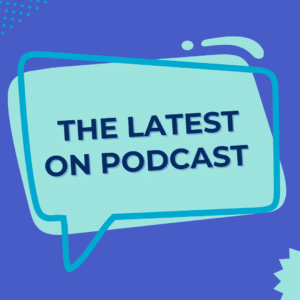
Podcasts have been on the rise for the past few years, with their popularity increasing steadily. In fact, according to a recent study, there are now over 2 million podcasts available, covering a wide range of topics and interests. A recent article on Marketing Dive pointed out that despite some industry slowdown in growth, “podcast listening time continues to rise, as does U.S. podcast advertising revenue, which passed the $1 billion mark in 2021 and is predicted to surpass $4 billion in 2024, according to the Interactive Advertising Bureau (IAB).”
So, what is the current state of podcasting, and is it losing steam?
Podcasts are actually still a popular medium for many listeners. According to a recent study there are over 116 million podcast listeners in the United States alone, which is a significant increase from previous years. Additionally, podcast revenue is projected to reach $2 billion in 2023, which is a clear indication that podcasting is still a lucrative industry.
However, there have been some indications that podcast growth may be slowing down. For example, some of the biggest podcast networks have reported slower growth in listenership and advertising revenue in recent quarters. This could be due to a variety of factors, such as increased competition from other forms of media or simply a natural plateau after years of rapid growth.
Furthermore, changes in consumer behavior could also impact podcast interest and marketing use. For example, if people start to spend less time commuting or working from home becomes more prevalent, podcast listening habits could change. Similarly, if younger generations start to prefer video content over audio, it could impact the growth of the podcast industry.
Regardless of the reasons, some marketers have reported that podcast advertising is becoming less effective, with lower engagement rates and higher costs.
What does this mean for using podcasting as a marketing tool?
It’s important to note that podcasting is still relatively new. It’s probable that the industry will continue to evolve and adapt in the coming years. For example, there are efforts underway to improve podcast discovery and engagement, such as the development of new podcast search engines and recommendation algorithms. Additionally, some podcasters are experimenting with new formats and distribution methods, such as live podcasting events and exclusive content for paid subscribers.
So, while there may be some indications that podcast interest and marketing use is slowing down in Q2 of 2023, it’s important to view these trends in context. Podcasting is still a popular and lucrative industry, and it’s possible that the industry will continue to evolve and adapt in the coming years. Whether or not podcasting remains a dominant form of media in the future remains to be seen, but for now, it’s clear that podcasts still have a lot to offer both listeners and advertisers alike.
As more brands experiment with podcast advertising, the industry could become more sophisticated in how it targets and measures the effectiveness of these campaigns. This could help to address some of the concerns around the ROI of podcast marketing and make it more appealing to a wider range of businesses.
By staying on top of industry trends and being open to new technologies and consumer behavior changes, podcast creators and marketers can continue to innovate and grow their audiences in the years to come.
Sources:
